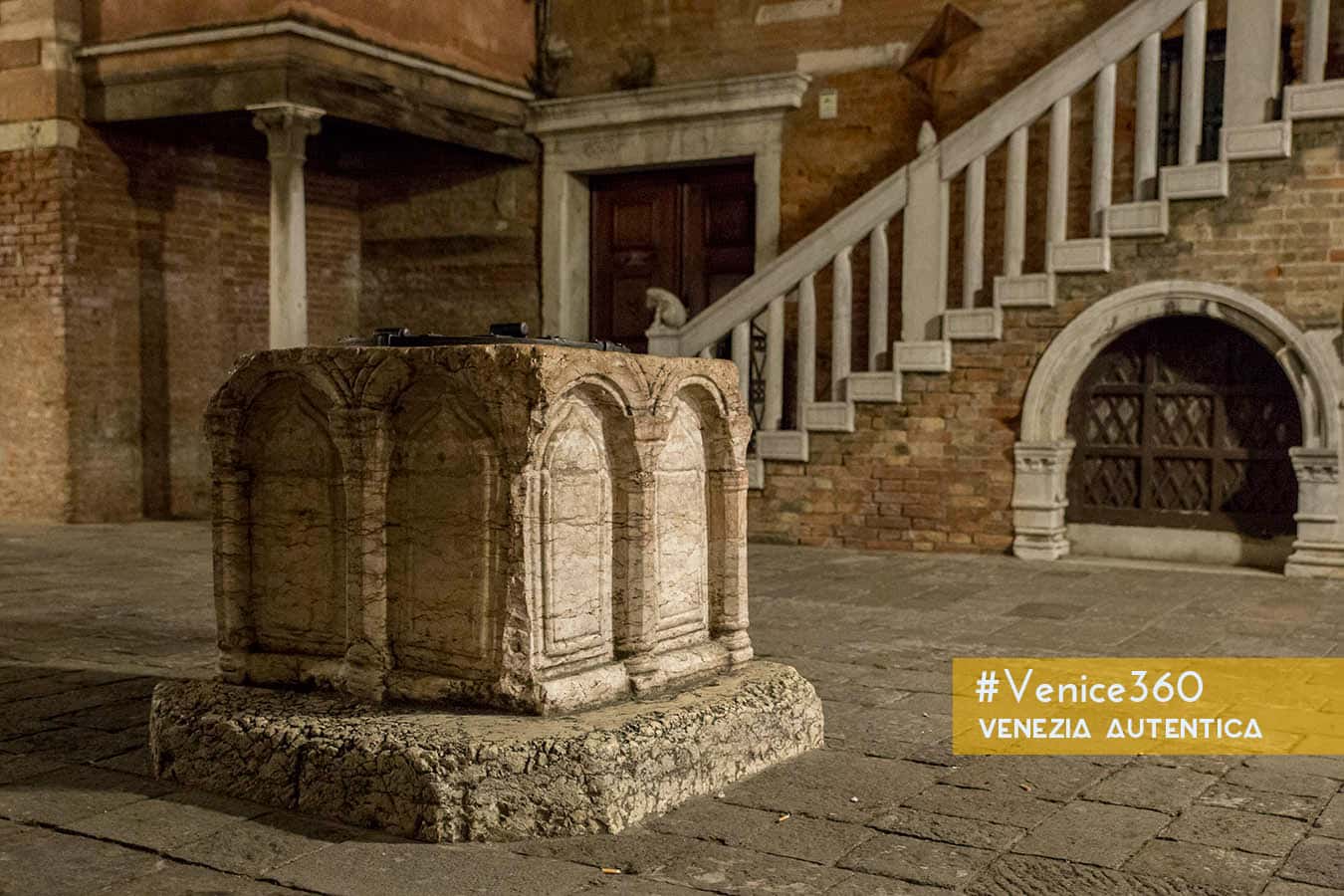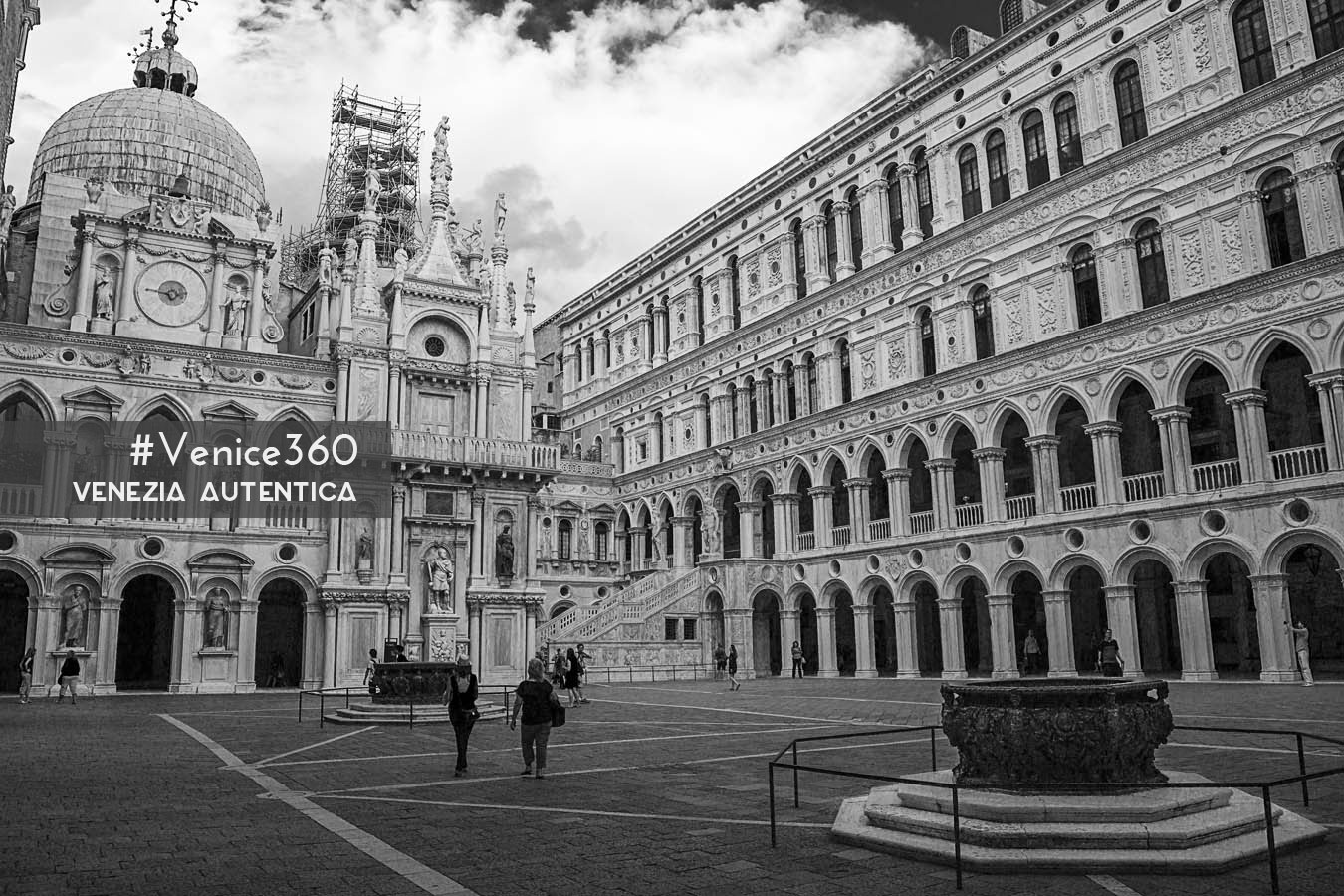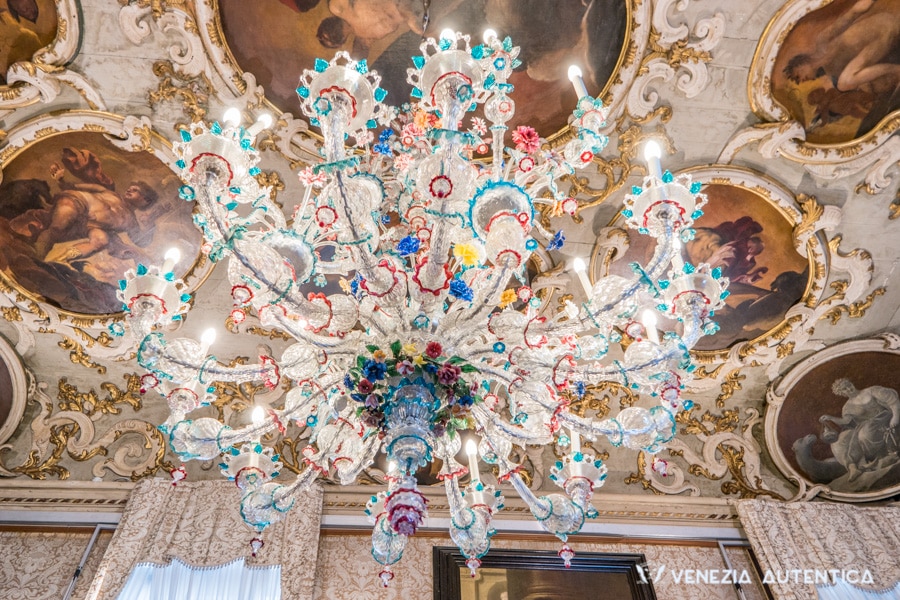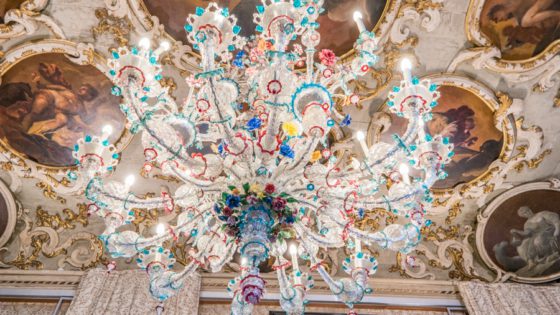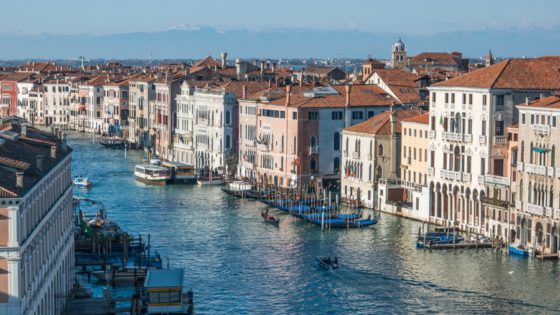
From the very beginning, the Venetian Lagoon could provide plenty of fish to the Venetians to feed themselves.
However, something just as important was missing entirely: there was no trace of drinkable water.
In the past, and still today in some areas of the world, the lack of water could be solved through the construction of draw-wells. Thanks to such wells, people could access underground water resources.
However, Venice was built on a swampland area in a salty lagoon, and the only kind of water underground was saltwater!
Luckily, Venetians found a solution to the lack of fresh water, and that solution has been key to starting the construction of Venice itself.
The solution Venetians found was to filter rainwater. But how?
How could Venetian have fresh water in Venice?
As mentioned, the only way for Venetians to have fresh water in Venice was by filtering rainwater and collecting it at the bottom of Venetian wells, which work differently from wells around the rest of the world.
To do so, Venetian developed a smart process that involved a few important steps.
The first step of the process was to find a big empty surface. This step is the reason why Venetian wells are found exclusively in squares and in courtyards.
The second step was to dig these squares 5 to 6 meters deep (16-20 feet), and use clay to create a thick water-resistant layer at the bottom.
Then, Venetians filled these deep holes with stones and sand from the riverbeds of rivers nearby on the mainland.
Finally, Venetians built 2 or 4 gutters symmetrically around the well to drain the rainwater falling on the square and the roofs of the buildings all around it.
This solution is the reason why squares in Venice are not perfectly even: the ground around every gutter has a bit of a slope to help the water naturally flow towards the gutter and be drained.
Once the rain fell on the “campi” of Venice, the water naturally flowed towards the guts and was drained.
The water was then filtrated mechanically by flowing through the sand and stones underground and would stop once it reached the layer of waterproof clay at the bottom.
The bricks used for the “chimneys” of the wells were very porous. These bricks, called “pozzali”, allowed then the water to filter through them and fill in the “chimney”.
Venetians could then collect water at the bottom of the chimney through a bucket, just like one would do with any other kind of well.
The Venetian Republic, called “Serenissima”, was well aware of the needs of Venice and its population.
That is why the Republic always promoted and coordinated the creation of wells. Proof of that are the decrees that the Great Council wrote in 1322, 1424, and 1768 ordering the construction respectively of 50, 30 and 55 new public wells all over the city.
Water was crucial, therefore the use and supervision of public wells were very strict.
Indeed, the Venetian Superintendency supervised all wells, and local priests and block leaders were the only people with keys to access the wells assigned to them.
Venetians could access wells twice per day, in the morning and in the evening, at the ringing of the “wells bells”.
In 1858, a report by the Comune di Venezia made a census of the wells in Venice: 180 working public wells and 6.046 private wells! The same research also showed that in previous centuries 556 wells had been closed and removed, one of which from the most famous places of all: Piazza San Marco.
The creation of a well was complex, requiring very specialized workers and resulting, therefore, a big investment. For these reasons, the Serenissima created a corporation specialized in the construction of public wells. No other entities were authorized to do so. Contributions, nevertheless, were welcome and encouraged: the Government always rewarded largely, with kudos and prestige, every rich Venetian family who would donate (read finance) a well to the city. This is why on many “vere da pozzo”, the visible part of the wells, inscriptions or bas-relief referring to the generous family can be spotted within the decorations.
Being a member of the specialized corporation aforementioned and called confraternita dei Pozzeri, or well-makers confraternity, was a prestigious title. This honour, along with the specific knowledge and job expertise, was passed on from fathers to sons.
However, there was one condition to it: every Pozzere had to vow to build wells only for the Venetian Republic.
Despite the presence of a great number of wells in Venice, the growing Venetian population meant a growing demand for water.
This led, in 1386, to the creation of the “corporazione degli acquaroli”, a corporation whose role was to ensure that the city had enough water at all times.
In case of need, members of this corporation would row to the Brenta, a river on the mainland nearby, fill their boats with freshwater, row it back to Venice, and fill up the wells again with the use of wooden pipes.
In the 16-hundred, the population in Venice grew so much that in 1609 the “acquaroli” decided to dig an artificial channel to speed up the delivery of water.
The new channel, 1m wide and 13,5km long, started from the Brenta river and ended in Moranzani, much closer to Venice.
Although, as mentioned before, the water was public, “acquaroli” had the permission to sell water for direct consumption, just like modern street vendors would do.
Acquaroli, however, soon added one more task to their job.
Indeed, since “acquaroli” were cruising through most of the city to fill in the many Venetian wells, they started also collecting garbage.
They kept the same type of boats, now called “scoazzere”, but began storing the freshwater in closed barrels to preserve its purity.
In the history of wells and water supplies, also the Vatican played an important role.
Indeed, Venice welcomed the construction of hundreds of churches and cloisters around Venice, each with its private well. However, the Venetian Government always enforces its Law on its territories, even on religious orders.
One of these laws made it mandatory for the orders to give access to its wells at specific times of the day to all Venetian citizens.
This brilliant system that relied on public, private and religious wells, was carefully maintained, and strictly monitored the access to and the use of water is one of the most important factors that allowed Venice to grow and thrive for many centuries.
When the Serenissima fell, the lack of care of the new rulers led this efficient but delicate water system to collapse.
The solution to the needs of the population, however, could be met through the construction of a more modern and efficient system: an aqueduct.
The construction of the Venice aqueduct started in 1881 with the lay-down of a cast iron pipe (800mm diameter) passing under the Lagoon and connecting Moranzani to Venice.
The works were finished in 1884 and authorities celebrated the success by building a fountain in the middle of Saint Mark’s square!

Curious Facts:
- There are only 3 signed wells: the pozzo at Ca’ D’Oro created by Bartolomeo Bon in 1427 and the bronze wells in the Palazzo Ducale court, created by Nicolò Conti and Alfonso Alberghetti in 1556 and in 1559
- There was a well in San Marco’s square, but it had to be closed because it required continuous intervention. The water inside of the well tended to be contaminated and to become smelly too quickly; the water was therefore not drinkable but even worse it was also polluting the area with its bad smell.
- The total surface of wells is equal to 10% of the whole surface of the city!
- Every inhabitant had the right to have in average of 5.5-6.8 L of water per day.
I'm visiting Venice. Why should I follow your recommendations?
The way you visit Venice has an impact both on the quality of your experience and on Venice itself. Chilling, exploring, shopping, eating and drinking where the locals do, can make a huge impact both on the memories you bring home and on the local economy and community.
Home >> Venice and Venetians >> Venice Explained >> You’re Here
Facts, Curiosities, History of Venice, Italy
More about life in Venice, Italy

